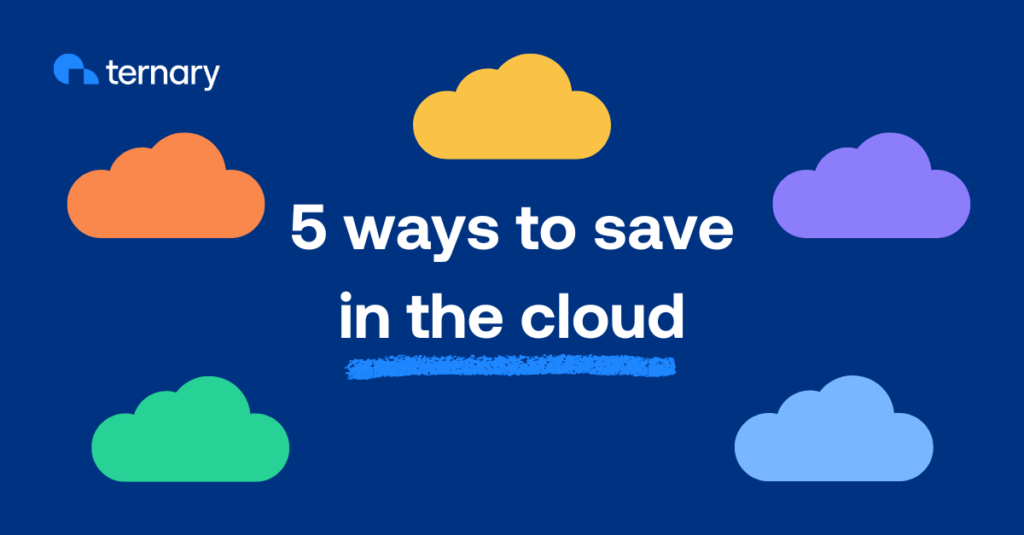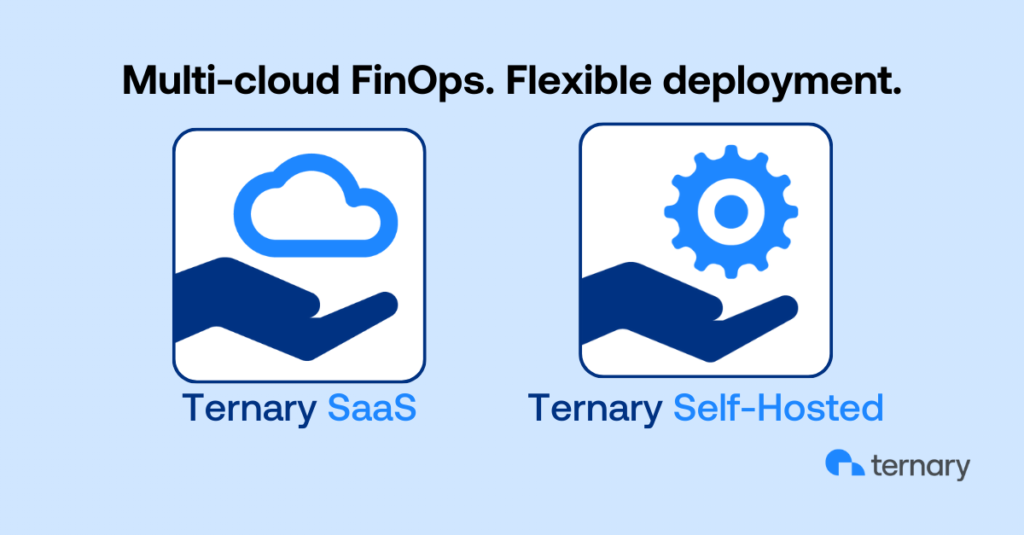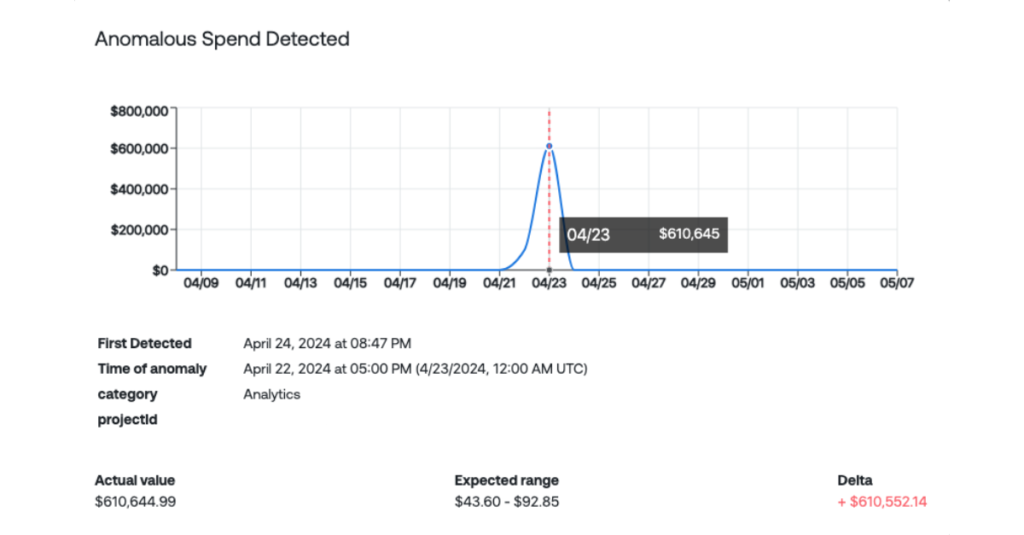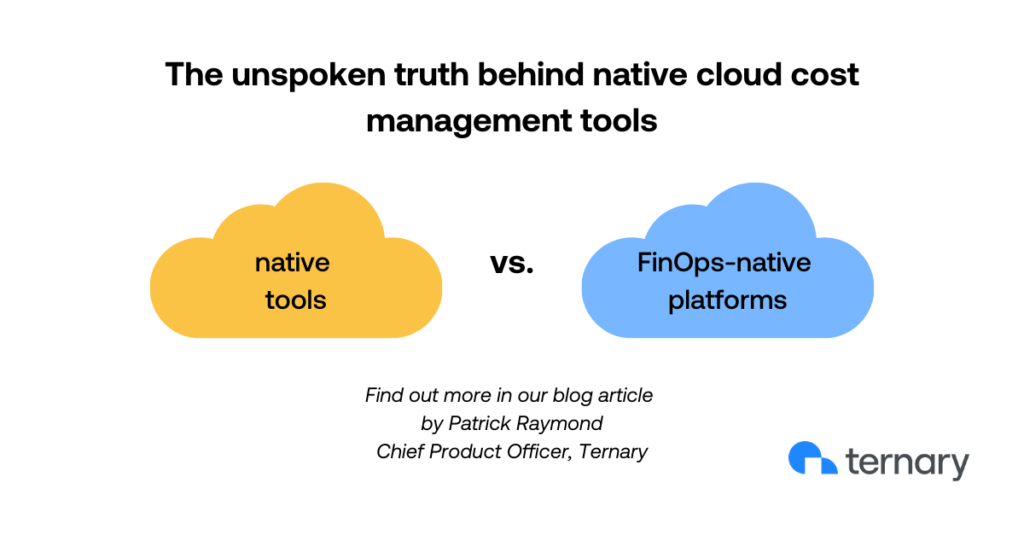Many organizations operating in the cloud are focusing heavily on cloud cost savings. Whether it’s due to economic pressures, budget overruns, a leadership mandate, etc., the push to find cloud cost savings is a common theme.
However, despite these cost-cutting efforts, few organizations see a steady decline in their cloud investment. Often, savings are reinvested into innovative projects, such as AI, rather than decreasing overall spending. As the old saying goes, “Your mileage may vary.” So while there are certainly opportunities for cloud cost savings, the outcomes can differ widely, depending on how organizations operate. In this blog, we’ll dive into key cloud cost savings techniques applicable at any level of FinOps maturity: Crawl, Walk, Run. But first, let’s examine why cloud cost optimization matters.
Challenges of managing cloud cost and usage
As organizations increase their cloud adoption, they often encounter both cost and architectural challenges. These challenges can restrict your company’s ability to actually drive meaningful cloud cost savings. Some of them are as follows:
- Budget unpredictability is a major issue, often due to poor tracking and forecasting of cloud usage.
- Enterprises frequently underestimate the financial impact of licensed software running in cloud environments.
- Many organizations struggle with gaining full visibility into their cloud operations. This makes it difficult to track who is using what, how resources are being consumed, and where cost-saving opportunities exist.
- Running legacy systems alongside new environments can introduce both financial and operational overhead. This dual-system maintenance limits the ability to optimize cloud costs during migration and transformation efforts.
Before you make any efforts to cut cloud costs, you must have an understanding of what’s actually being billed and why. But why is this important? Because what you think you’re using and what you’re actually paying for can be two different things.
Stages of cloud cost optimization
Cloud cost optimization progresses through three stages of the FinOps Maturity Model as published by the FinOps Foundation. Each of these stages builds on the last to improve cloud cost efficiency. Here’s an overview of these stages.
- Crawl: Initial steps include negotiating pricing agreements, eliminating idle or unused resources, and cautiously exploring commitment-based discounts. These efforts focus on establishing visibility and capturing early savings.
- Walk: Intermediate efforts involve rightsizing workloads, managing discount commitments more actively, and implementing manual anomaly detection to flag cost irregularities. Note: At Ternary, we believe you should rightsize before you reserve, so keep that in mind when planning your cost optimization strategy
- Run: Advanced practices include automated anomaly detection with remediation workflows and rearchitecting infrastructure specifically to reduce cloud costs at scale.
5 ways to achieve cloud cost savings
Let’s explore five common strategies to reduce cloud costs. While these aren’t the only options, they highlight key opportunities for savings. Additional approaches such as bill validation or ‘lights on, lights off’ policies can also deliver meaningful cost reductions.
- Negotiate pricing agreements
- Eliminate zombie infrastructure
- Rightsize resources
- Purchase AND manage commitment-based discounts
- Rearchitect applications
Bonus: Avoid unintended costs through anomaly detection
1. Negotiate pricing agreements
When procuring cloud services, you’ll find that each cloud provider offers specific licensing agreements, such as Microsoft Enterprise Agreements, Google Cloud Commits, and AWS Enterprise Discount Program (EDP). These agreements are crucial rate optimization techniques outlined in the FinOps Framework by the FinOps Foundation. Often considered to be private pricing arrangements, these deals typically involve nondisclosure agreements (NDAs) and can lead to substantial savings, particularly for larger enterprises with significant cloud footprints.
Although procurement teams typically lead these negotiations, they rely heavily on other teams’ input regarding cloud consumption trends and forecasts. Additionally, securing executive buy-in is often essential, due to the high value of these arrangements. If your organization is making or planning significant cloud investments, it’s advantageous to start these rate optimization negotiations early in your FinOps journey—i.e., during the Crawl stage of maturity.
2. Eliminate zombie infrastructure
Reducing waste and eliminating unused resources is a top priority for FinOps practitioners, as highlighted in the State of FinOps 2024 by the FinOps Foundation.
Common sources of cloud waste include:
- Idle and unattached resources: These are instances, storage volumes, or IP addresses that remain active but are no longer serving any functional purpose. Without automated monitoring in place, such resources frequently go unnoticed and gradually increase overall cloud expenditure.
- Overprovisioned resources: Organizations often allocate more compute power, memory, or storage than necessary to meet workload demands. This overprovisioning typically originates from conservative provisioning decisions or a lack of clarity around actual resource requirements.
- Inefficient storage usage: Retaining obsolete data, using high-performance storage for low-priority workloads, or failing to leverage tiered storage options can all lead to inflated costs.
- Unoptimized data transfer: Data transfer across cloud regions or to external networks incurs additional costs that can escalate quickly.
- Lack of monitoring and alerts: Without monitoring tools and cost alerts, organizations are unable to respond to spending anomalies in real time.
“Zombie” resources—those that are idle or unused but still incurring costs—represent a prime opportunity for immediate cost savings. Eliminating zombie infrastructure is the “low-hanging fruit” of workload optimization. Key stakeholders often include the FinOps team and the engineering team, who are directly involved in identifying and managing these resources. Eliminating zombies is a straightforward tactic you can implement in the Crawl stage of workload optimization.
3. Rightsize resources
Rightsizing is a strategic workload optimization technique designed to improve resource utilization. It also has the added benefit of yielding significant cost savings. To effectively implement rightsizing, it’s crucial to anticipate future demand changes, assess key performance metrics (such as CPU and memory usage), and establish thresholds for underutilization tailored to your business needs. Your strategy may involve rightsizing within the same instance family or across different families. It’s essential for Engineering and the FinOps team to collaborate on rightsizing opportunities, as some resources may be restricted from rightsizing due to architectural or regulatory constraints. Typically, the greatest savings potential from rightsizing is realized during the Walk stage of maturity.
4. Purchase AND manage commitment-based discounts
Commitment-based discounts are a key component of rate optimization, similar to negotiating pricing agreements. Each cloud provider offers different types of these discounts. As part of your rate optimization strategy, you can invest in resource-based commitments, such as Reserved Instances (RIs) and Committed Use Discounts (CUDs). You can also purchase spend-based commitments, like Savings Plans. Your strategy may be to use a combination of both. Such discounts often involve 1- or 3-year terms for using services with specific attributes at a discounted rate—e.g., instance type, availability zone, or offering class (such as standard or convertible). Savings can reach up to 70% compared to on-demand pricing, and most organizations typically have a coverage rate of 60%–70%.
Managing these commitments effectively is a cross-functional effort. For example, if you have underutilized Amazon EC2 Convertible RIs, you might exchange them to enhance coverage and reduce waste. Finance and procurement teams need to understand and influence the rate optimization strategy, collaborating closely with engineering and FinOps teams. Executive buy-in may be necessary, depending on the size of the commitment purchase. As a best practice, we recommend that you rightsize infrastructure before you reserve. Organizations often focus on optimizing their commitment discount strategy during the Crawl stage of their FinOps maturity journey.
5. Rearchitect applications
Architecting for Cloud in the FinOps Framework—more commonly known as architecture modernization—is a powerful method for achieving cloud cost savings. Unlike other strategies, architecture modernization is highly specialized and lacks a one-size-fits-all approach.
Implementing this technique is significantly influenced by how and where your application was built. You’ll need to understand your organization’s migration strategy (e.g., lift and shift, refactor), cloud strategy (e.g., public, hybrid, multi-cloud), and regulatory requirements. By thoroughly analyzing these factors, you can determine the most effective deployment model, such as containerization or serverless technologies, while balancing trade-offs between security, performance, cost, reliability, and sustainability.
Given its potential impact on the business, architecture modernization requires input from all key stakeholders. It’s also crucial to involve cloud or enterprise architects, as this falls within their expertise. If they are not already part of your FinOps team, securing their buy-in for modernization discussions is particularly important. While rearchitecting applications can lead to significant cloud cost savings, it involves a substantial investment and may require pausing other projects. For this reason, it is typically addressed during the Run stage of FinOps maturity.
Bonus: Avoid unintended costs through anomaly detection
While you may not consider anomaly detection a cloud cost savings technique, it’s crucial for proactively controlling costs. Unexpected or unplanned changes in spending, if left unchecked, can lead to significant financial losses. Therefore, identifying anomalies and analyzing their root causes in a timely way are essential in preventing their recurrence and managing potential budget overruns.
You can implement anomaly detection at any stage of your organization’s FinOps maturity. It can range from simple alert systems to more sophisticated automated remediation processes. However, organizations typically see the most significant benefits from effective anomaly detection during the Walk or Run stages of maturity.
How do you measure cloud cost savings?
One of the most critical metrics for cloud spend optimization is the Effective Savings Rate (ESR). This metric evaluates how much of your cloud budget is being saved through discount models and efficiency strategies.
By comparing actual spend, including discounts and amortized commitments, against what the cost would have been at full on-demand pricing, ESR quantifies the success of cost-saving initiatives.
A higher ESR reflects stronger financial discipline and more strategic cloud usage. Equally important is analyzing cloud unit economics, which measures the cost per output unit, such as per customer or per transaction.
This metric helps determine whether increased spend results from business growth or inefficiencies.
Top tools for cloud cost savings
Ternary
Ternary offers a full-spectrum FinOps platform designed for in-depth cost control and optimization across multi-cloud environments. The platform presents a unified cost intelligence layer to optimize spend across GCP, AWS, and Azure. It helps finance, engineering, and FinOps teams understand not just what they’re spending, but why.
Ternary has supported various organizations in achieving measurable cloud cost savings through advanced FinOps practices and multi-cloud visibility.
One notable example comes from BetterCloud:
Our cloud infrastructure costs were 17% of non-GAAP revenue. We reduced that down to 8% of non-GAAP revenue with Ternary.
Jamie Tischart, CTO, BetterCloud
ProsperOps

ProsperOps is an automated rate optimization solution designed to help organizations achieve reliable cloud cost savings without hands-on effort.
It intelligently blends savings instruments such as AWS Savings Plans and Google Cloud CUDs, to maximize efficiency while minimizing commitment risk. The tool’s automation runs in the background and requires zero engineering overhead while delivering measurable results through metrics like Effective Savings Rate (ESR).
KubeCost
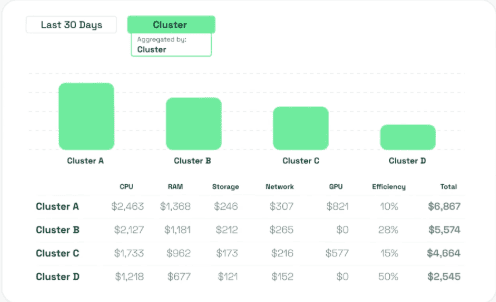
Kubecost is a point solution that specializes in cost visibility and optimization for Kubernetes environments. It tracks cost metrics and attributes cloud spend across namespaces, services, and workloads within K8s clusters. It also consolidates this data with cloud infrastructure costs to give a more comprehensive view.
Note: This content was presented during the FinOps Summit Canada 2024 virtual event. Watch the recording:
Discover how Ternary helps you save on multi-cloud spend.

